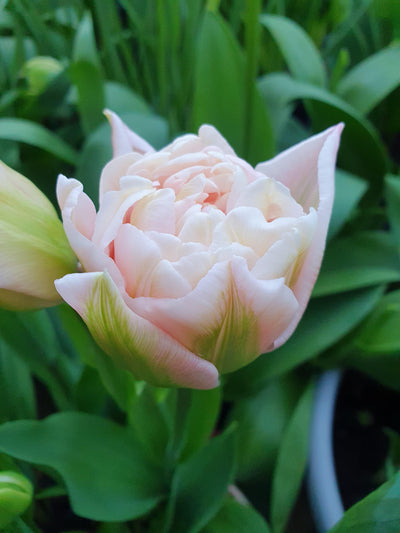How to make a bulb lasagne
When faced with the word ‘lasagne,’ most people’s minds would spring to a warm, oven cooked pasta bake. A gardener would smile, and instead of this homemade meal they would envisage layers of spring colour – gritty compost and bulbs replace meat or veg and cheese. This technique of bulb planting is invaluable for all, a vital element to many spring gardens to ensure months of colour, all in one place.
But what actually is this rather culinary method of propagation? A bulb lasagne comprises of multiple layers of different kinds of bulbs at different depths in one pot. As a rule, the smallest, earliest flowering bulbs (such as crocuses) are planted nearest the surface of the soil; the bulbs get bigger and later flowering the further down the pot they are planted. By including and incorporating multiple species, the pot will provide colour right through from as early as February all the way until late May.
A medium to large sized pot with a minimum diameter of 30cm is ideal for a bulb lasagne, but as always with gardening the bigger the better! Use the biggest sized pot that your space allows to provide the most impact. But nothing is set in stone – what’s to stop you planting your lasagne in a prominent position in a raised bed or border? When it comes to selecting the ingredients – sorry, the bulbs – for your lasagne, many retailers offer them in bundles perfectly suited to this method of planting. For those more fussy or feeling more creative, there is nothing more exciting than putting your bulb lasagne together yourself. A minimum of 3 and a maximum of 5 layers is optimal. The topmost layer are the first ones to appear, by including snowdrops, crocuses or dwarf irises you will brighten the winter days. Daffodils or narcissi (with the latter planted above the former) and their blooms in uplifting shades will follow, and below these the key ingredient: tulips. Some choose to add multiple layers of tulips to their lasagne, planting early flowering species tulips above the opulent and frilly late spring favourites. If you are willing to adventure even further with your lasagne, a layer of alliums at the base will ensure your display is prolonged until as late as June! Make sure to only plant dwarf cultivars however, as taller ones are best in a border due to their need for space.
The compost mix used must be free draining and gritty, this will prevent your bulb lasagne becoming saturated and waterlogged in winter downpours. Sitting in damp conditions can cause bulbs to rot and can even lead to the onset of tulip fire disease which could be detrimental, so a mix of grit and multipurpose compost in a ratio of about 1:5 will ensure your lasagne is free draining. By placing the pot on feet, the flow of moisture will become more regulated and will minimise any risk to your lasagne.
October is the moment to plant your bulb lasagne. Alliums, crocuses and daffodils like to be planted in September; however tulips prefer to wait until November. October is a compromise, and planting now will ensure you have bucket loads of colour next spring.





Leave a comment